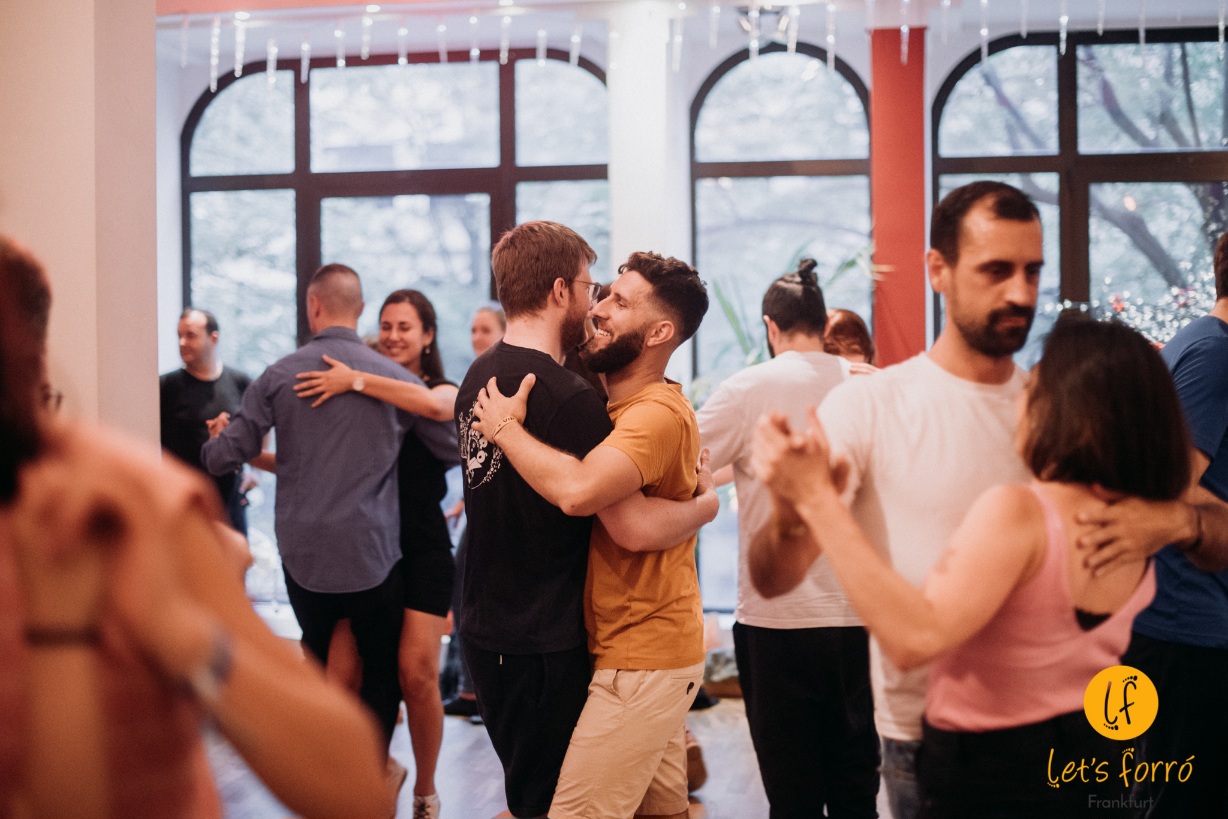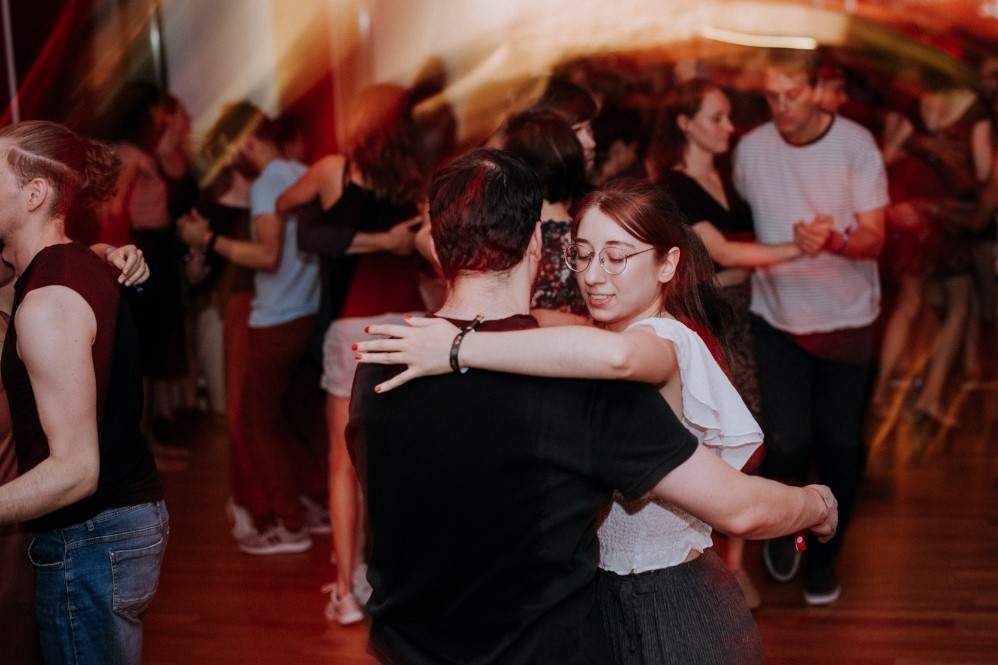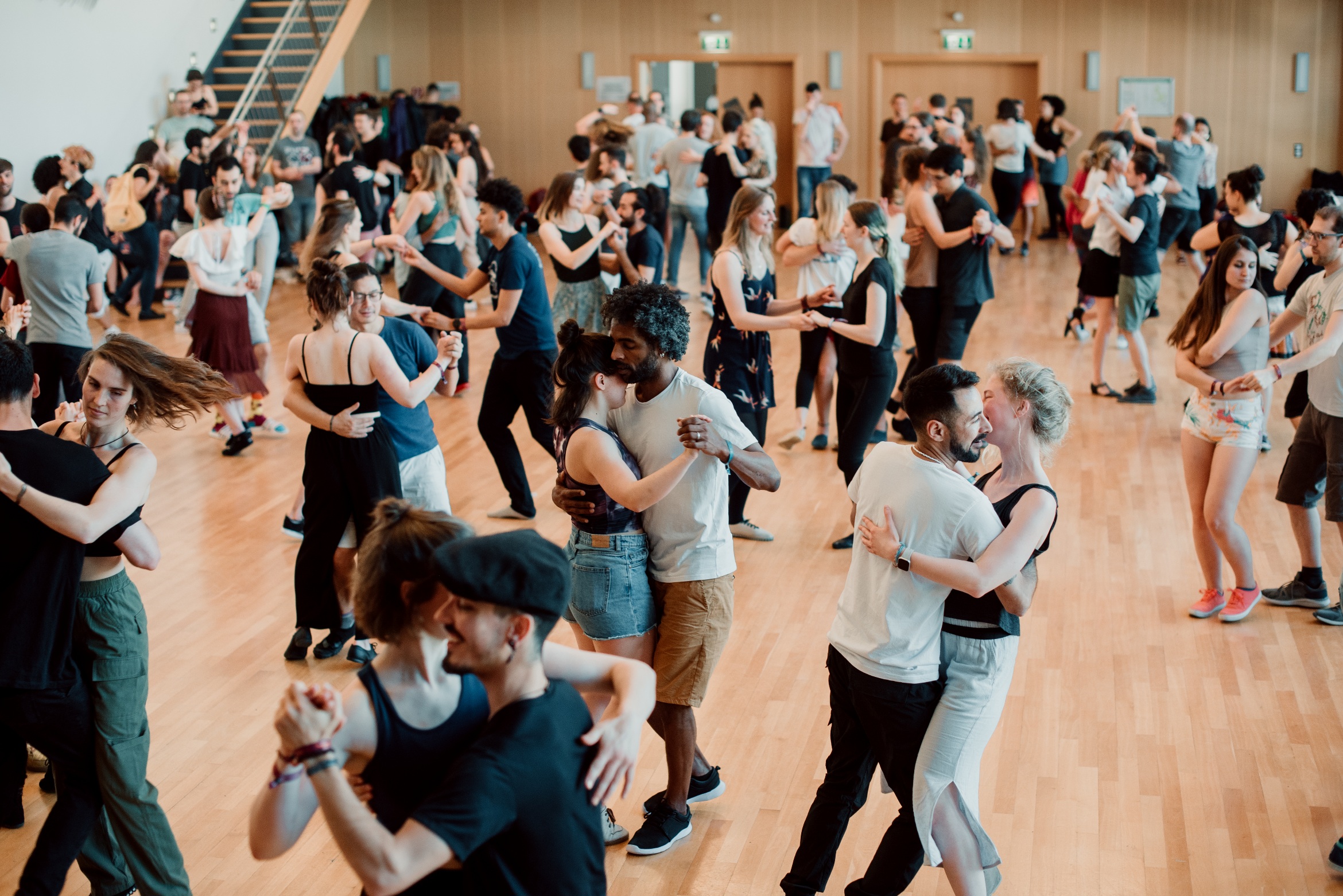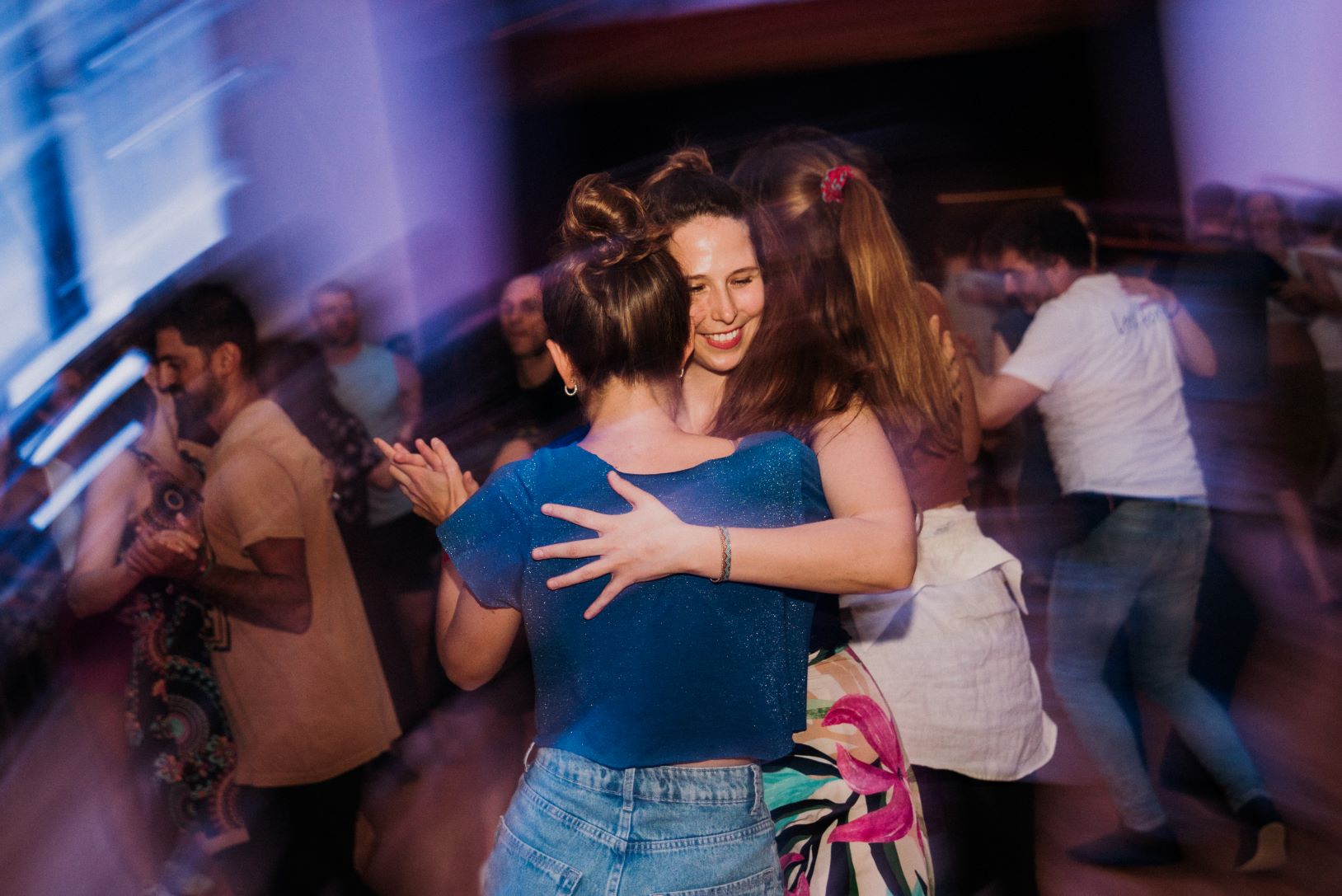Forró
What is Forró?
Forró (pronounced ‘Foho’ in Portuguese) is both a music genre and the most popular partner dance in Brazil. It originated in the North-East of the country in the 19th century and became known throughout Brazil in the 1940s. Since then, forró has gained widespread popularity beyond Brazil’s borders, with a young but nonetheless well-established forró scene in Europe.
The music
As music, forró has five famous rhythms: xote (the slowest), baião (the original forró rhythm), xaxado, arrasta-pé (the fastest), and forró itself. The instruments typically heard in forró music are the zabumba (bass drum), the sanfona (accordion) and the triangle.





The dance
Forró is danced in pairs and, as in most partner dances, a distinction is made between two dance roles: leader and follower. Especially in European forró communities, the traditional gender roles of leading men and following women are questioned, so that, unlike many other partner dances, it becomes more and more common to see same-sex couples or leading women and following men on the dance floor.
Due to this variety of rhythms, the dance itself ranges from wild and fast to calm and relaxing. These different styles of dancing differ from region to region and may be known by different names according to the location. The influences from swing, Cuban salsa, samba de gafieira, and Brazilian zouk, make forró a truly unique dance that is definitely worth a try!